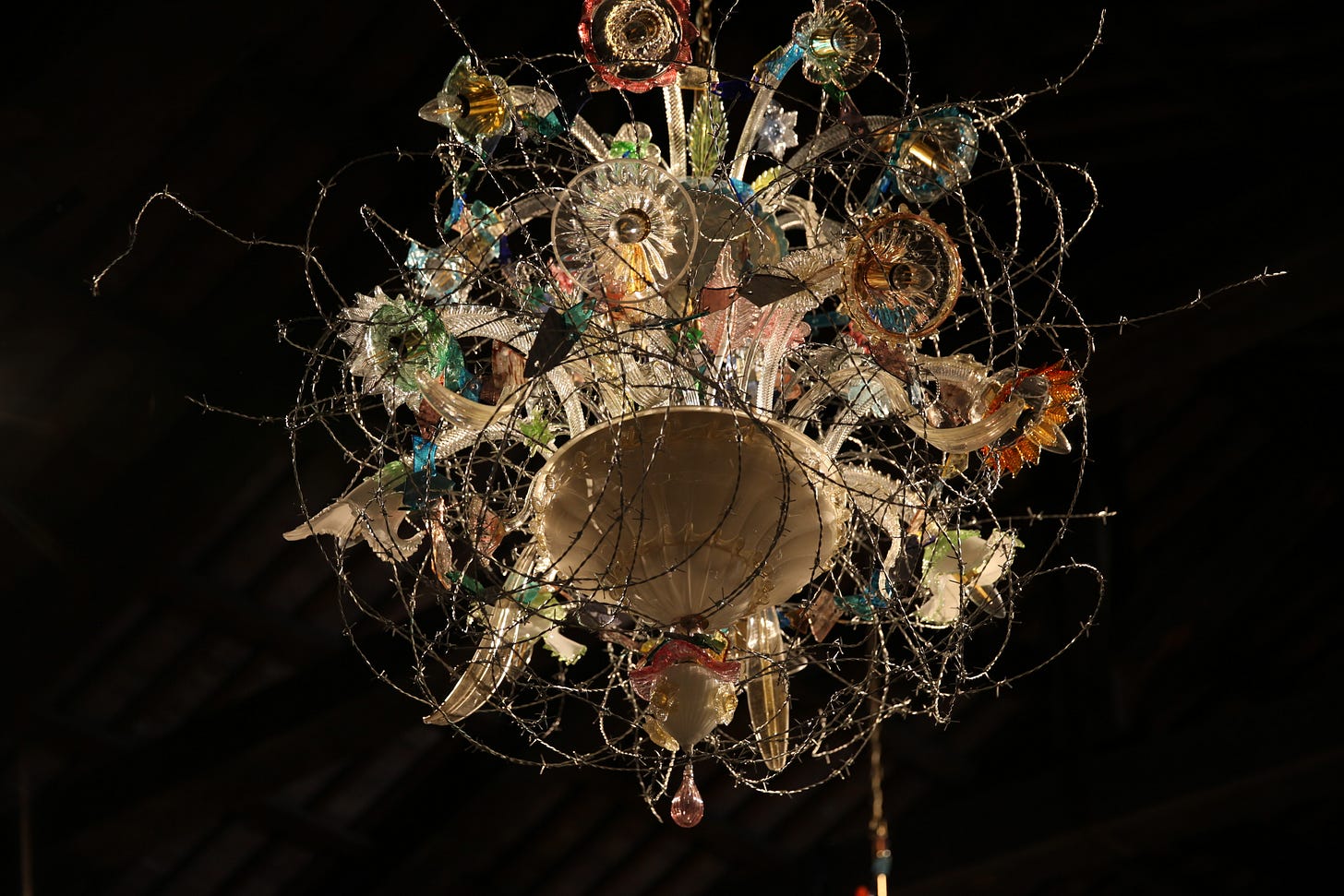Meet the artist representing Türkiye at the 60th Venice Biennale
Gülsün Karamustafa on the state of the world
Based between Berlin and Istanbul, Gülsün Karamustafa is one of Türkiye’s most influential and outspoken artists. Over the past fifty years, she has produced paintings installations, photography, video and performance works that explore pressing contemporary issues such as the modernisation of Türkiye, memory, migration, identity, cultural differences and gender. She draws inspiration from both personal and historic narratives and champions the use of diverse materials.
She has enjoyed solo exhibitions at major institutions and galleries worldwide, including Salt Beyoğlu in Istanbul and the National Museum of Contemporary Art in Athens, and has work in the permanent collections of the Centre Pompidou in Paris, the Tate Modern in London and the Guggenheim in New York. Now she’s representing Türkiye at the 60th Venice Biennale (until 24 November).
I caught up with Karamustafa following the opening of Hollow and Broken: A State of the World, her site-specific installation for the Türkiye Pavilion in Venice.

Me: Congratulations on a wonderful installation. I’d love to hear more about the ideas explored in Hollow and Broken: A State of the World.
What I am dealing with is the state of a world hollowed out to the core by wars, earthquakes, migration and nuclear peril. I attempt to physically and emotionally summon into existence this phenomenon: the emptiness, the hollowness, the brokenness produced by the devastation that has become commonplace.
Hollow and Broken comprises a series of interconnected sculptural works made from disparate materials, a new film and a sound work. Can you tell me a little bit more about the installation’s different components?
Upon entering the Pavilion, visitors will see four groups of hollow, plastic moulds held upright by iron supports. Scattered around the space, they resemble concrete columns but the choice of materials is in stark contrast to the column’s traditional associations to glory, artillery and power. They embody my feelings of emptiness and brokenness in the current world.
The four containers on rails are filled with shards of Venetian glass, a material that resonates deeply with my feelings. The carts appear to be floating, but their movement is restricted as the rails lead to nowhere. These works evoke the transportation of heavy cargo and make reference to the historical significance of the Sale d'Armi, Venice’s largest production centre during the pre-industrial era and a potent symbol of military power.
Suspended from the ceiling are three large chandeliers made from shattered Venetian glass, each representing a monotheistic faith: Christianity, Judaism, and Islam. These luminous objects are shrouded in a web of barbed wire, which symbolises the historic tensions and conflicts between these three religions.
[This concept is an idea explored in Karamustafa’s 1998 artwork, Trellis of My Mind, a 20-metre frieze composed of 300 colourful religious illustrations from Islamic, Christian, and Jewish manuscripts.]
The film I’ve edited is made from found propaganda footage depicting wars, diasporas and demonstrations, all difficult times in peoples’ lives. It’s accompanied by a sound composition that envelops and shadows the visitors.
How does Hollow and Broken explore the central theme of the Biennale ‘Foreigners Everywhere’?
The central theme of the Biennale is not new to me as I have explored feeling like a foreigner in several previous works. This time, I wanted to respond more specifically by expressing the hollow and broken feeling that I share about the state of the world that we are living in now. I have lived throughout half of the 20th century and entered a new one with great hope that things would change a bit. After living a quarter of this new century with the same heartbreaking issues that were hard to bear, I had the urge to comment on it.

The installation is accompanied by a book project. I’d love to hear more about it.
I started to work on the book project with graphic designer Esen Karol and editor Melis Cankara while I was working on the first drawings for the Türkiye Pavilion. As the book was to be released before the opening of the exhibition, we didn’t have the chance to include the installation photos in the book. So, we used only the preliminary sketches. To my surprise when I look at the book now, I realise that I have executed the project exactly as I had intended from the outset.
Which other Pavilions are you inspired by and why?
Keep reading with a 7-day free trial
Subscribe to The Istanbulist to keep reading this post and get 7 days of free access to the full post archives.






